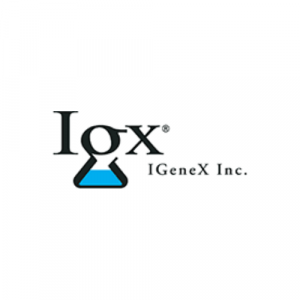
Help your children avoid the scary effects of Anorexia.
Functional Medical Psychiatrist Dr. James Greenblatt shares the causes, indicators, risk factors, and best treatments he’s found in his over 30-year career working with people with eating disorders and how he works with their parents to provide the most effective recoveries possible.
Discover how you can prevent one of the most life-threatening psychiatric diagnoses in adolescents and young adults.
Anorexia Nervosa is the most life-threatening illness of any psychiatric diagnosis, with the highest risk of suicide. Yet, we have no treatment model in the traditional or functional medical worlds. Instances of eating disorders have doubled in the last ten years, and it’s incredibly difficult to get into treatment due to overcrowding.
A family history of eating disorders or OCD can put someone at a significantly higher risk of developing an eating disorder. A sad reality is many physicians suggest kids lose weight, so noticing a change in diet is another strong indicator something might be wrong. Vegetarian/vegan diets in adolescents are another risk factor for the onset, slower recovery, and higher relapse rate of eating disorders. Also, kids need higher amounts of zinc in adolescence to get through puberty, so maintaining a healthy diet is critical for healthy development.
Celiac disease is a rapid road to malnourishment, so confusion with eating disorders is widespread. PANDAS patients also have strikingly severe eating disorder symptoms that come and go. The earlier doctors catch and treat these illnesses, the easier the recovery is. If we wait until patients are in their 20s or later, it’s harder to recover from, and tons of damage has already been done.
In the last ten years, the medical community has provided research through international genetics studies, brain studies, MRIs, and more pointing to eating disorders as brain-based illnesses. Family dynamics, trauma, social media, bullying, and stress can all trigger someone with a predisposition.
Unfortunately, the psychological treatment for kids in hospitals or residential programs hasn’t been helpful. Treatment models haven’t been updated in fifty years, and eating disorders have the highest relapse rate of any psychiatric disorder.
The lines between disorders were a lot more defined when Dr. Greenblatt started in this field. Now, the diagnoses diverge and constantly change, meaning someone restricting food at fourteen can turn to bulimia by sixteen, and ultimately binge eating disorder by twenty. Anorexia is marked mainly by food restrictions, whereas purging of food (usually via vomiting) is indicative of bulimia. Binge eating is the mass consumption of thousands of calories and is 10x more common than any other eating disorder but much easier to treat.
Many eating disorders start from body-shaming and bullying, either by peers or family members. Some parents put a lot of pressure on kids due to their issues with body image, sometimes going so far as to sign their child up for programs like Weight Watchers, which can be humiliating.
The concept of moderation has to be built into our kids’ eating habits and outlining which foods are considered worse than others, such as refined sugar. Kids who hide food are often kids who aren’t allowed things like candy or snacks, so they resort to hoarding those “no” foods in secret. Girls with ADHD often struggle with eating disorders, especially binge eating disorders, because the same impulse control issues that impact their school life can translate to foods.
Effective treatment depends on understanding the risk factors and then treating the disorder early. Nutritional plans are effective, but aggressive ones are often not needed or warranted. Family therapy is critical as well because parents need to be part of the solution. Older kids and young adults are more difficult to treat because of the amount of time they’ve been nutrient deficient and how much catching up they have to do.
Stress, change in diet, and medical complications can all contribute to increased rates of relapse. Listing out what parents can do to mitigate relapse risk, like active listening and talking to your child, can decrease the risk and severity of relapse. If a relapse happens, getting the child back into therapy and on supplements is integral to getting them back on track, so relapse prevention must constantly be in the back of parents’ minds.
Listen now to understand, recognize, and minimize the long-term effects of eating disorders on kids and young adults.
A pioneer in the field of functional medicine, James M. Greenblatt, MD, has treated patients since 1988. After receiving his medical degree and completing his psychiatry residency at George Washington University, Dr. Greenblatt completed a fellowship in child and adolescent psychiatry at Johns Hopkins Medical School. He currently serves as the Chief Medical Officer at Walden Behavioral Care in Waltham, MA and serves as an Assistant Clinical Professor of Psychiatry at Tufts University School of Medicine and Dartmouth College Geisel School of Medicine. Dr. Greenblatt has lectured internationally on the scientific evidence for nutritional interventions in psychiatry and mental illness. He is the author of seven books, including Finally Focused: The Breakthrough Natural Treatment Plan for ADHD and Answers to Anorexia. He is the founder of Psychiatry Redefined, an educational platform dedicated to the transformation of psychiatry, which offers online CME-approved courses, webinars, and fellowships for professionals about functional and integrative medicine for mental illness.
Website – https://www.PsychiatryRedefined.org
Facebook – @jamesgreenblattmd
LinkedIn – https://www.linkedin.com/company/psychiatryredefined/
Book – https://www.jamesgreenblattmd.com/answers-to-anorexia/
© Copyright 2024 Five Journeys®. All rights reserved.


$85-$225 depending on insurance coverage.


At Home
Urine
$699
Fully covered by Medicare. Repeat test prices $249


This test evaluates the genetic profile for multiple health indicators. Click here for more information.
At home
Blood Spot


This company can test for lyme, babesia, bartonella and additional tick-borne illnesses. Click here for more information.
Blood
around $1600 (depends on panel selected)






Blood work for blood count, urinalysis and vitamin levels.
At any Quest Diagnostics Location
Blood
You often have to fast for these tests-please check your providers notes.




This test evaluates many measures including micronutrients, antioxidants, minerals, detox, overview of gut function, omegas and toxic exposure. Click here for more information.
At home.
Urine


This test evaluates the gut function and indicates microbiome balance, overgrowth, infection, inflammation, parasites and digestive efficacy. Click here for more information.
$179-$425 depending on insurance coverage.




Blood


This test evaluates the presence of potentially harmful heavy metals stored in the body. Click here for more information.
Testing: $79 x2 paid to Doctor’s Data
DMSA: $38 paid to Johnson’s Compounding Pharmacy


No insurance coverage


This test is designed to look at food sensitivities (IgG immune responses). It is available in both a 99 or 184 panel. Click here for more information.
Blood
$129-238